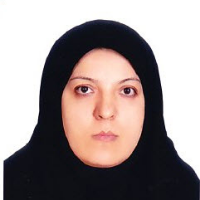Study of the Effects of Gamma Irradiation on Immunological and Pathological Characteristics of Bee Venom in a Mouse Animal Model
Introduction and Objective
People are sensitive to bee venom and the presence of allergenic compounds in the venom has made it difficult to use and determine the optimal dose for treatment. The aim of this study was to reduce allergenic compounds and to evaluate the quality of gamma ray processed bee venom.
Venom samples were irradiated at doses of 0,2,4,6 and 8 kGy by Gamma cell 220 Cobalt 60 irradiation facility. Chemical compounds of venom were determined pre- and post-irradiation. Protein subunits of venom was detected by polyacrylamide gel electrophoresis. Allergen compounds were measured using HPLC technique. To assess the immune response and pathology of irradiated venom, 36 mice were grouped into 6 groups with 6 replications. 1 mg of venom per kg of body weight was injected intraperitoneally and after 48 hours, blood was drawn from the heart. Blood serum was isolated for liver enzyme and interleukin-2 assays. In the final of study, mice liver and kidney samples collected and fixed in 10% formalin. Liver samples were sliced, fixed and stained by hematoxylin and eosin. Data were analyzed by SAS Software.
The results showed that true protein content and malondialdehyde level in irradiated samples had no differ with the control group (p>0.05). Electrophoresis patterns and HPLC results showed that irradiation at doses of 4 and 6 kGy decreased phospholipase and hyaluronidase amount and increase the low subunits of protein (p<0.05). According to the HPLC results of bee venom samples before and after irradiation, bioactive compounds of bee venom including histamine, dopamine and norepinephrine were detected at 1.692, 2.739 and 1.756 minutes, respectively. In the sample of non-irradiated venom, the amount of histamine, dopamine and norepinephrine based on the percentage of the area under the curve were 3.541, 1.640 and 0.343%, respectively. The amount of histamine, dopamine and norepinephrine decreased after irradiation. According to the results of ELISA test, serum interleukin-2 concentration was not significantly different in different treatments of crude and irradiated venom with doses of 2, 4 and 6 kGy (p>0.05). However, the dose of 8 kg reduced the effects of bee venom on increasing the activity of helper T lymphocytes (p<0.05). Based on the histology results, irradiated bee venom at doses of 4 and 6 kGy reduced hyperemia and swelling of hepatocytes.
According to the results of this study, a dose of 6 kGy of gamma ray without negative effects on the characteristics of bee venom can be used for bee venom radiation and reduction of allergen compounds.
- حق عضویت دریافتی صرف حمایت از نشریات عضو و نگهداری، تکمیل و توسعه مگیران میشود.
- پرداخت حق اشتراک و دانلود مقالات اجازه بازنشر آن در سایر رسانههای چاپی و دیجیتال را به کاربر نمیدهد.



